
The insulated oversocks are designed to be worn at camp, at home or when working outside in the cold months. They are made with a lightweight ripstop outershell, wool wadding and a soft, light taffetas fabric liner.
The insulated oversocks pack small and will help keep the feet warm when socks alone aren’t enough. The wool wadding and choice of fabrics ensure breathability, ease of care and comfort, while the high-ankle design and elasticated cuffs encloses warmth and keeps the socks from slipping away.
— available in three sizes : Small, Medium and Large — made with traceable, European wool wadding (60 or 120 g/sqm)
— packable and lightweight 55 euros
Materials and functions
My favourite time for bikepacking might be winter, as the landscapes, sounds and lights take a calming and soothing tone that I never tire of. From the crispy sound of frosty grass to the seemingly unlimited expanses of white snow, I can happily spend weeks riding accross these landscapes.
Spending nights and days in cold temperatures, however, is tough on the body, and keeping the extremities warm can be challenging. Once they get cold, they can be difficult and painful to warm up again. It is key to take care of them as they are the most exposed parts of the body and can easily be damaged from staying cold too long.
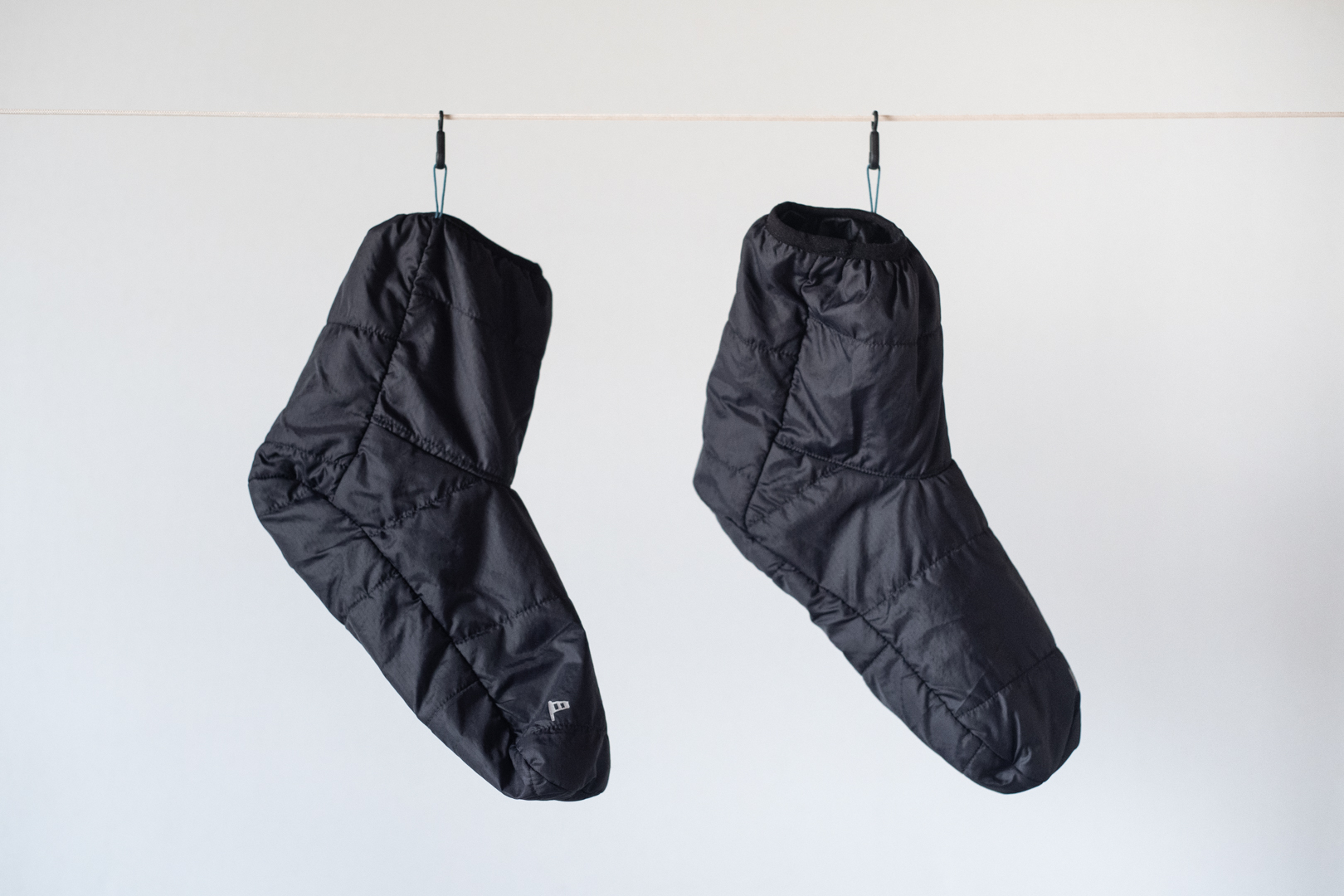
— Keeping warm
While I have found techniques to keep my hands and head fairly warm, I always struggle to tend to my feet, which have, at a few occasions, become painful from being cold. Hot water bottles are a wonderful thing, but they are most ideal at camp, once inside the sleeping bag. For all the other times where I sit still – when I cook or eat, for example – my feet cool down and are difficult to warm up again. I can slip on a pair (or two) of gloves on my hands, so I thought about doing the same with my feet.
The quilted oversocks were born from the desire of having a lightweight, packable item that can help keep my feet warm without adding much bulk to the overall pack. Just like puffy jackets, they are made out of a lightweight outer and inner sheel with a layer of insulation in between. This construction allows the garment to trap air between the fibres and provide insulation, while keeping the weight down and being extremely packable.
— Wool insulation
Insulated garments usually use down or synthetic insulation. Both have their pros and cons. In essence, down is very packable and biodegradable and synthetic wadding is easier to take care of and insulating even when wet.
We chose to use wool wadding for the quilted oversocks as we have found that it combines the ease of use of synthetic insulation and the breatheability of natural fibres. The wool wadding used for the quilted oversocks is made with European wool (from Austria, Germany, Norway, Sweden and Switzerland) and transformed in Germany. The wool is processed, mixed with a small proportion of corn-based PLA (polylactic acid) for stability and formed into wadding. This form of insulation can be easily machine washed, insulates even when wet and excels in moisture and odour management.
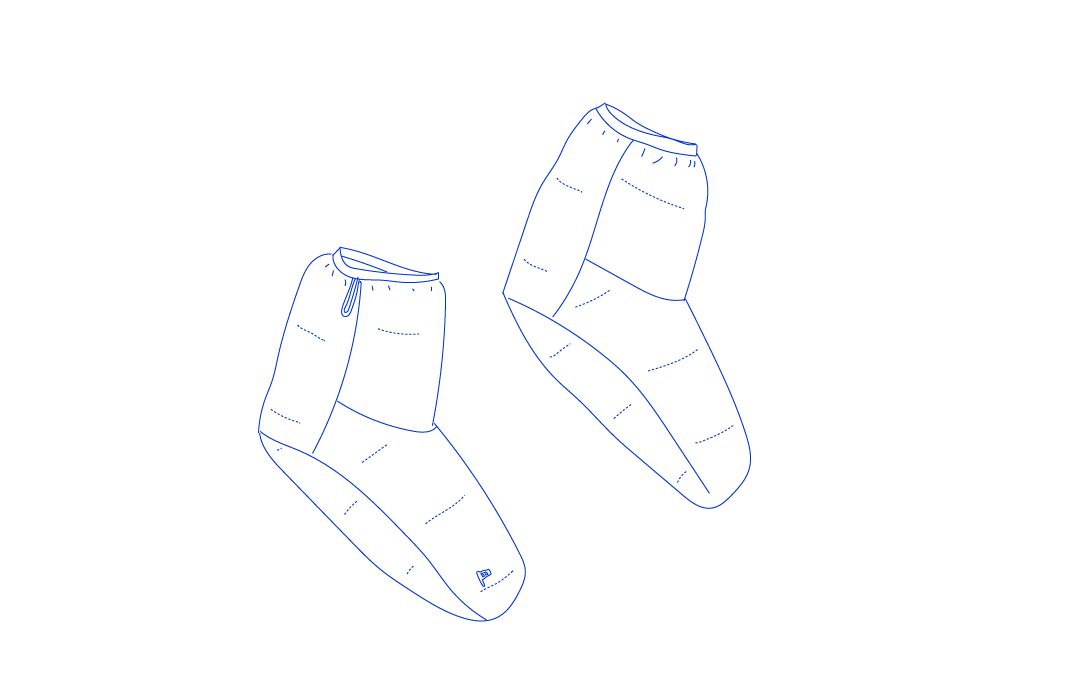
Wool sets itself apart from other fibers by its ability to capture moisture : wool fibers absorb twice as much water than their cotton counterparts, and thirty times more than polyester. This characteristic, combined with some chemical components of wool, help manage the odours resulting from bacterial growth that appears in damp, warm environments. When the skin sweats, bacteria start developping and eventually causing odours to form.
To make the most of wool’s breathability and absorption, the shell fabrics were chosen according to their perspirability. Both are calended, meaning that they have been processed in a way to prevent insulation fibres from passing though the fabric, but aren’t coated with a waterproof layer. They are slightly water-repellant, but will get wet if exposed to moderate quantities of water.
The insulation and outer shell fabrics are quilted in-house, allowing us to use two different weights of insulation and the outer shell fabric of our choice.
The oversocks are offered with 60g/sqm or 120g/sqm insulation, depending on the time of year you plan on using them and how warm you run.
— Ease of use
The Quilted oversocks have been designed to be easy to use and take care of.
A small reflective detail on each foot makes them easier to find in the dark, while cord loops helps hang them to dry without compressing the insulation with a peg.
The outer-shell is lightweight but still resistant, while the liner is very light and needs to be handled carefully. The outer and liner are hand-tacked together at the tip of the toes to keep the liner from turning inside out when removing the ouversock. However, it can sometimes slightly twist, in which case a gentle shake will put it back into place. This construction avoids having bulky seams inside the sock and limits heat bridges.
The wool wadding used for the insulation is breathable, odour-resistant and insulates even when wet.
Specs
The quilted oversocks use a black, lightweight (58g/sqm), durable downproof ripstop nylon fabric for the outer, a black, soft, ultra-lightweight (22g/sqm) taffetas liner and 60g/sqm or 120g/sqm Lavlan wool wadding.
The outer shell and the insulation are quilted in the workshop.
- 40g in size Medium with 60g/sqm insulation
- 70g in size Medium with 120g/sqm insulation
- packs down to 0.25L
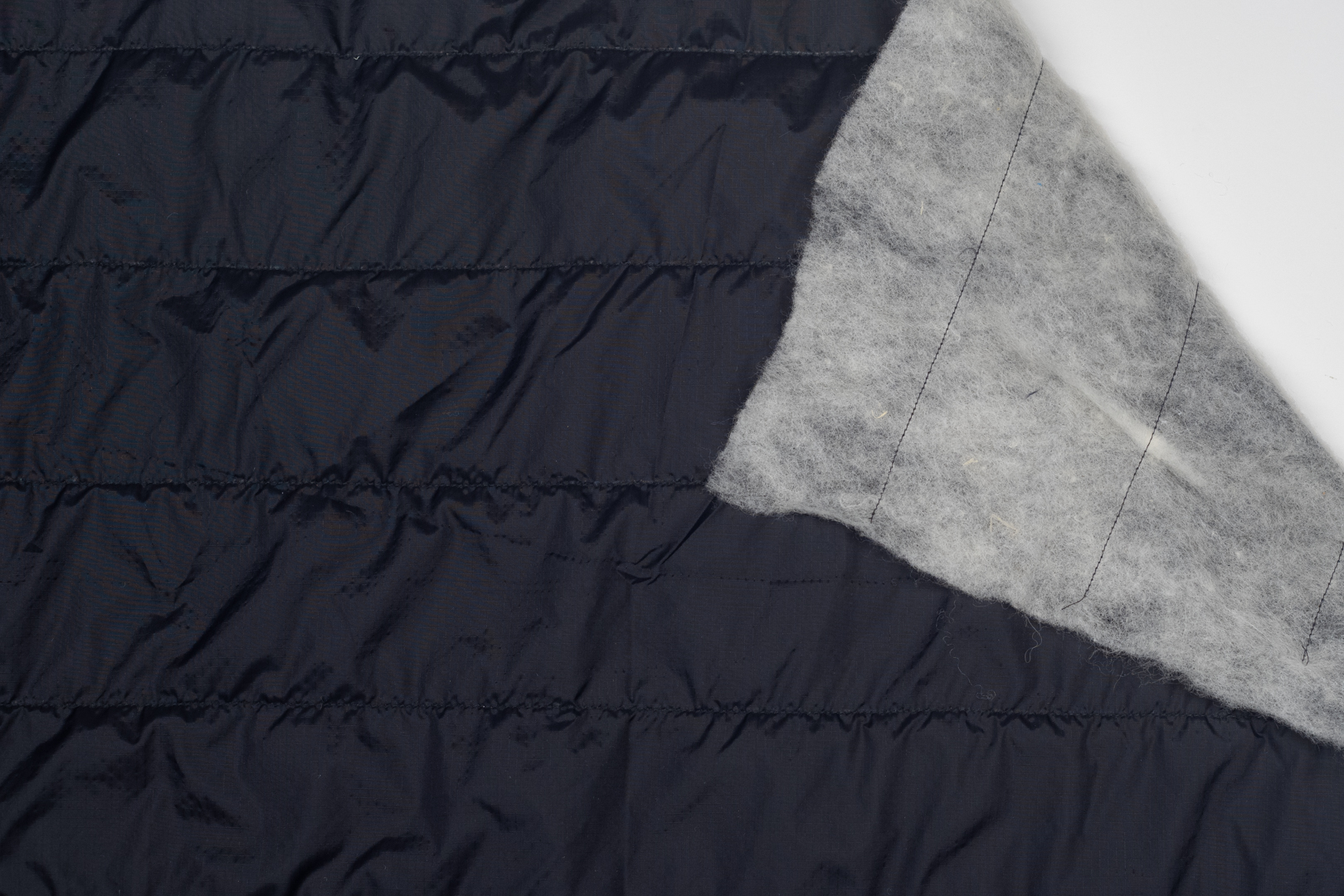
— Details


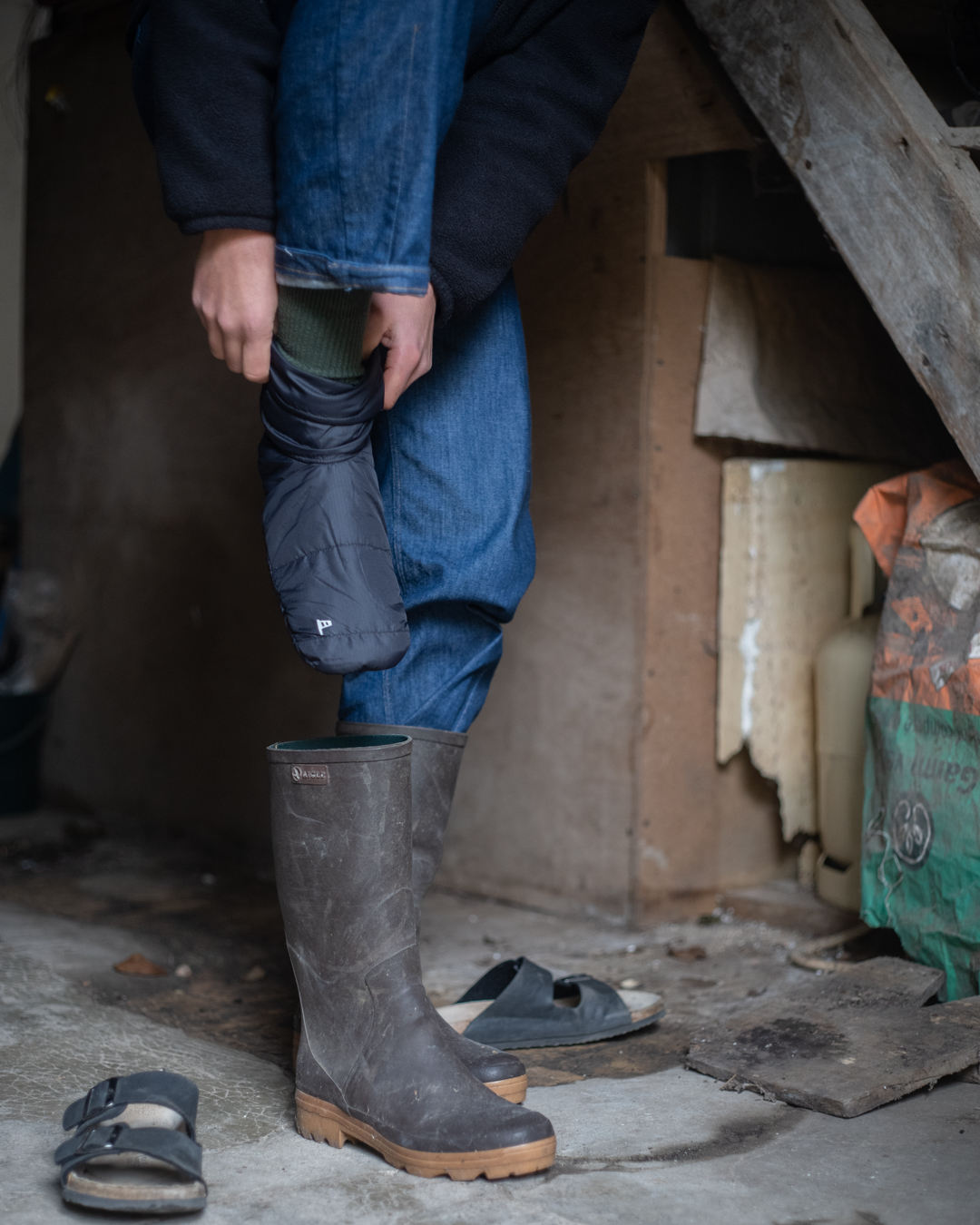
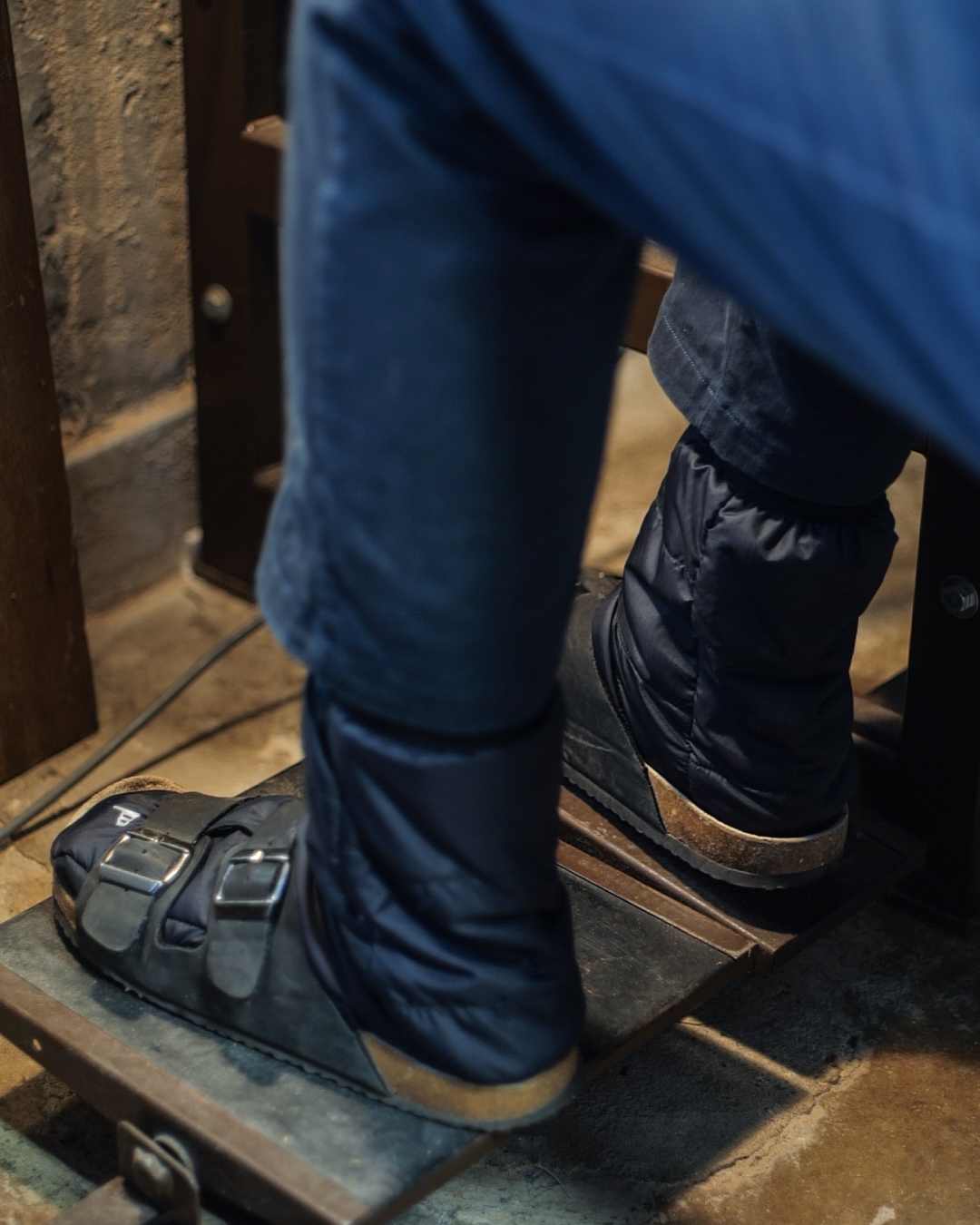

Sizing
The Quilted oversocks are offered in sizes Small, Medium and Large. Please choose your size according to the chart below, referring to your body measurements. The oversocks have an overall loose fit.
Please note that size names are solely for guidance. The sizing is based on usual grading for footwear.

Composition and care
- outer shell : 40D, 58g/sqm nylon ripstop, downproof, DWR finish
- insulation : 60 or 120g/sqm European wool (80%) – PLA (20%) blend,
- 10D, 22g/sqm nylon taffetas, downproof, DWR finish
The Quilted oversocks should be washed at 30°C maximum, and spun low. It is recommended to let them hang to dry.
Use wool detergent if possible, no bleach and no softener. Wool doesn’t need to be washed often, please wash only when necessary.
Do not iron.
A repair kit is included with every order.